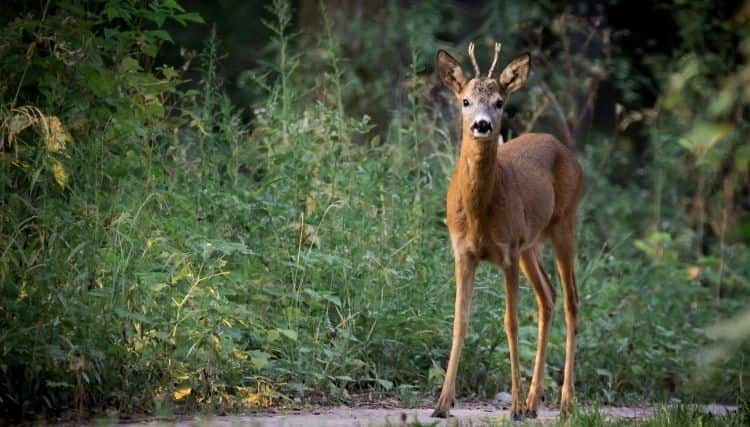
If you’ve ever wanted to know all there is to know about roe deer, then this guide is for you.
What is roe deer?
Roe deer are members of the deer family. They are a small, brown animal that is native to Europe and Asia. The roe deer is commonly found in forests, woodland, marshland, and semi-open areas.
Roe deer are small brown animals that have a long body with four legs and a long tail. Their eyes are black on the outside and white on the inside with their noses located on the top of their face.
They have long ears which they can use to filter out any sound they hear while they’re sleeping or eating something.
What is Roe Deer Size?
Roe deer (Capreolus capreolus) are a relatively small species of deer. Adult males, also known as bucks, typically stand around 60-75 cm (23-29 inches) at the shoulder and weigh between 20-35 kg (44-77 lbs). Adult females, also known as does, are slightly smaller, standing around 50-65 cm (20-26 inches) at the shoulder and weighing between 15-30 kg (33-66 lbs). However, the size and weight of roe deer can vary depending on factors such as age, sex, and environmental conditions.
Geographic Range
Roe deer (Capreolus capreolus) are native to much of Europe, from the British Isles and Spain in the west to the Ural Mountains in the east. They are also found in parts of the Middle East, including Iran and Turkey. The exact range of roe deer varies depending on the subspecies, which have distinct geographic distributions.
Roe deer have been introduced to other parts of the world, including New Zealand, Australia, and Argentina, where they have become established populations. However, these populations are not considered native and may have negative impacts on local ecosystems.
Roe Deer Habitat
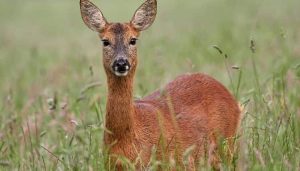
Roe deer (Capreolus capreolus) inhabit a variety of habitats, including woodlands, forests, fields, and scrubland. They prefer areas with a mixture of open spaces and cover, as this provides both food and shelter.
In woodlands and forests, roe deer are found in areas with a mix of deciduous and coniferous trees, as well as clearings and edges. They also inhabit areas with dense undergrowth, such as bracken and bushes, which provide cover and food.
In fields and farmland, roe deer are often found in areas with hedges, hedgerows, and other types of vegetation that provide cover and food. They also frequent areas with crops, such as wheat and barley, as these provide a source of food.
Overall, roe deer are adaptable and can live in a variety of habitats, as long as there is sufficient food and cover available. However, they are typically found in areas with some degree of vegetation cover, as this helps to protect them from predators and provides a source of food.
Physical Description
Roe deer (Capreolus capreolus) have a distinctive appearance, with a reddish-brown coat that is lighter on the underside and rump. They have white fur around their tail, and a small white patch on their rump, which is more visible when they raise their tail in alarm.
Both males and females have antlers, which are shed and regrown annually. The antlers of males, also known as bucks, are typically larger and more elaborate than those of females, known as does. Bucks have a maximum of three points on each antler, while does have simple spikes. The antlers of both sexes are covered in a layer of velvet during growth, which is shed once the antlers are fully developed.
Roe deer have large, dark eyes, and long ears with a distinctive black border. They have a short, stocky body, with slender legs and a small, compact head. Their hooves are split, which helps them to navigate through difficult terrain such as rocky hillsides.
Overall, roe deer are a relatively small and agile species of deer, with a distinctive appearance that makes them easy to identify.
Reproduction -Breeding
Roe deer (Capreolus capreolus) breeding season, also known as the rut, occurs between mid-July and mid-August. During this time, males compete for access to females, using their antlers to engage in territorial battles and displays of strength.
After mating, females give birth to 1-3 fawns after a gestation period of around 10 months, typically between mid-May and mid-June. The fawns are born with spotted coats, which provide camouflage in the grass and undergrowth. The mother will hide her fawns for the first few weeks of their life, returning periodically to nurse them.
Female roe deer typically reach sexual maturity at around 18-20 months of age, while males reach sexual maturity at around 12-18 months of age, but may not compete successfully for mates until they are older and larger.
Roe deer are polygynous, with males mating with multiple females during the breeding season. However, the dominant males typically have the greatest success in mating, as they are able to defend larger territories and attract more females.
How long does roe deer live?
They can live up to ten years in the wild and up to 20 years in captivity.
Communication and Perception
Roe deer (Capreolus capreolus) communicate with each other in a variety of ways, including vocalizations, body language, and scent marking.
Vocalizations include a range of sounds, including a bark or a short, high-pitched whistle, which can be used to alert other deer to danger or to communicate with mates or offspring.
Body language is also an important means of communication, with roe deer using a range of postures and movements to signal their intentions and emotions. For example, a submissive deer may lower its head and ears and crouch down, while a dominant deer may raise its head and antlers and stand tall.
Scent marking is another important means of communication, with deer using glands located on their faces, hooves, and tails to leave scent marks on objects in their environment. These scent marks can be used to communicate a range of information, including territorial boundaries, reproductive status, and social hierarchy.
Roe deer also have excellent senses of hearing and smell, which they use to detect predators and other threats. Their large, mobile ears allow them to detect even subtle sounds, while their sensitive noses allow them to detect scents from great distances.
What do roe deer eat?
Roe deer (Capreolus capreolus) are herbivores, and their diet consists mainly of plant material. They feed on a variety of vegetation, including leaves, shoots, fruits, berries, and nuts.
In the summer, roe deer feed mainly on herbaceous plants, such as grasses and herbs, as well as the leaves and shoots of trees and shrubs. In the winter, they rely more on woody vegetation, such as the bark, twigs, and buds of trees and shrubs.
Roe deer are also known to eat agricultural crops, such as wheat and barley, and may occasionally feed on garden plants and ornamental shrubs. In areas where roe deer are abundant, efforts are often made to protect crops and other vegetation from damage by these animals.
Overall, roe deer are adaptable feeders and are able to adjust their diet depending on the availability of food in their environment. However, they are primarily browsers, feeding on a variety of plant material that is available to them throughout the year.
Ancient Megaloceros Deer: The Biggest Deer to Ever Roam the Earth
Ecosystem Roles
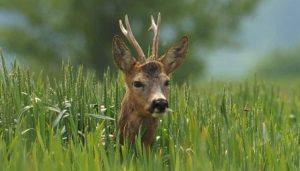
Roe deer (Capreolus capreolus) play important roles in their ecosystem. As herbivores, they help to shape plant communities by browsing on a variety of vegetation. This can have important effects on plant growth and regeneration, and can influence the structure and composition of the plant communities they inhabit.
In addition to their ecological role as herbivores, roe deer are also important prey for a range of predators, including wolves, lynx, and eagles. Their presence in an ecosystem can therefore help to support healthy predator populations, which in turn can have cascading effects on other species and ecosystem processes.
Roe deer are also important indicators of ecosystem health and biodiversity, as they are sensitive to changes in their environment and can serve as an early warning system for potential ecological problems.
Overall, roe deer are an important component of many ecosystems, contributing to the functioning and diversity of these systems in a variety of ways.
Conservation Status
The conservation status of roe deer (Capreolus capreolus) varies depending on the region and population. In general, the species is considered to be of least concern by the International Union for Conservation of Nature (IUCN), meaning that it is not currently facing any major threats and its population is stable or increasing.
However, local populations of roe deer may face threats from habitat loss and fragmentation, hunting, and competition with other species. In some areas, populations may also be impacted by diseases such as bovine tuberculosis.
Efforts are being made to conserve roe deer populations and their habitat in many parts of the world. This may include measures such as habitat restoration, hunting regulations, and monitoring of population trends and health. In addition, roe deer are often valued by hunters and wildlife enthusiasts, which can help to raise awareness of the importance of conserving these animals and their habitat.
What Is The Population Of Roe Deer?
The population of Roe Deer is estimated to be about 15 million roe deer. Roe deer can be found in woodland habitats.
How fast can roe deer run?
Roe deer (Capreolus capreolus) are fast runners and can reach speeds of up to 35 miles per hour (56 kilometers per hour) when running over short distances. They are also agile and able to change direction quickly, which allows them to evade predators such as wolves and lynx.
REFERANS: The modular organization of roe deer (Capreolus capreolus) body during ontogeny
Where do you find roe deer?
The woodland roe deer can be found in Europe, Asia, and North Africa.
How do you identify a roe deer?
A roe deer is a deer with tawny fur, preferably brown or reddish-brown. They have a rosy-colored face and a white rump patch. Their antlers are triangular and grow to be around four feet long. To identify a roe deer, look at the color of the face and rump patch, along with the shape of the antlers.
What is the difference between roe deer and fallow deer?
A roe deer is a deer species. Roe deer are smaller than fallow deer and when they escape from their predators, roe deer run to the nearest body of water.
Fallow deer are larger than roe deer and have a more extensive range, which includes many habitats that are suitable for migrations. There are no known predators of fallow deers in this regard since they have evolved huge antlers to fight off threats from other animals like wolves.
Is roe deer the same as venison?
Roe deer are not the same as venison. Roe deer are hunted for meat and venison is a popular meat delicacy. Venison is a red meat that has been processed by the butchers while roe deer can only be hunted seasonally and only with bows, knives, or rifles.
How high can roe deer jump?
Roe deer can jump up to 3 feet in the air, which makes them able to jump higher than a typical American roe deer. These animals are known for jumping over fences and trees to escape predators.
Can roe deer swim?
Roe deer can swim, though not as well as other deer species. They have a natural swimming pattern that is effective in keeping them afloat.
Where do roe deer sleep?
Male roe deer are mostly found sleeping in the bushes, but females prefer the soft grass. They also like to find spots with high visibility so they can see predators coming.
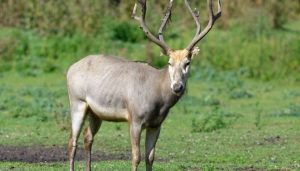

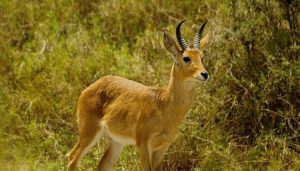
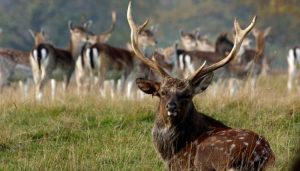
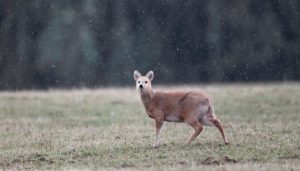
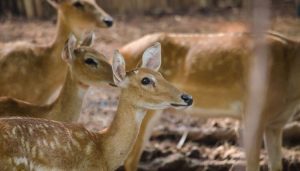
Leave a Reply